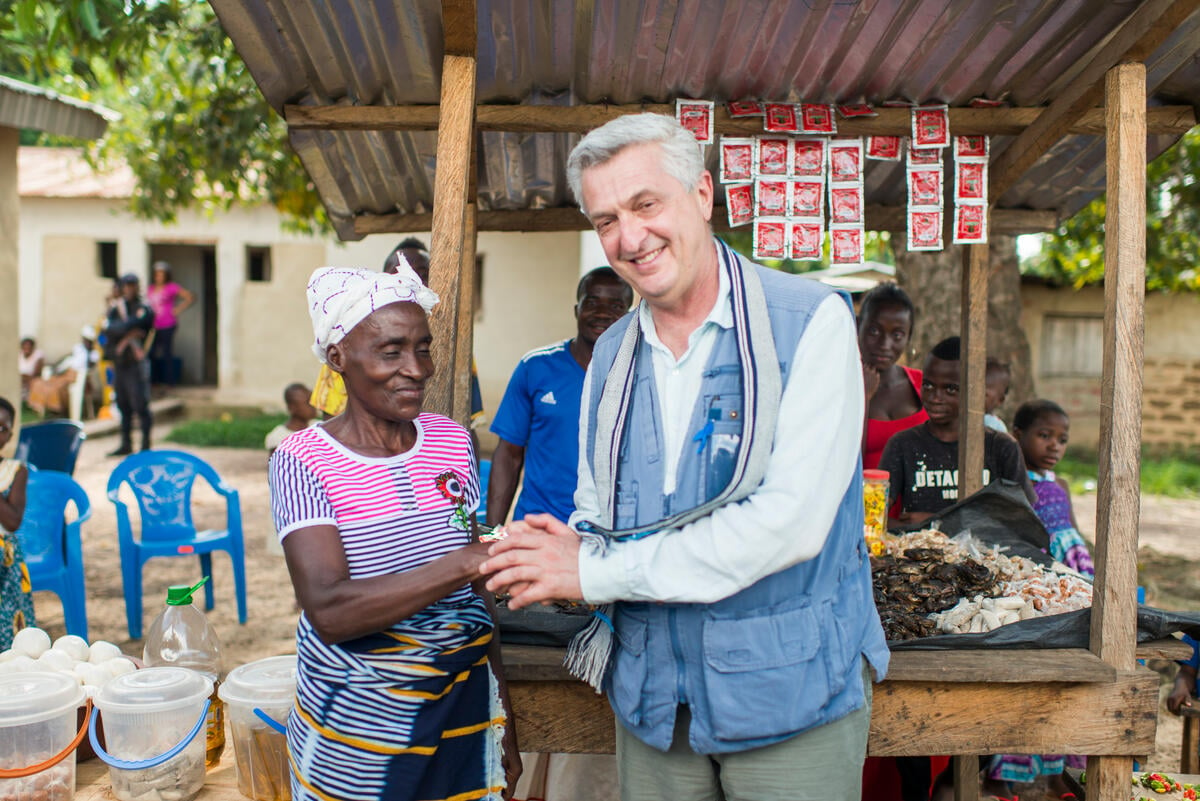UNHCR suspends transporting Sierra Leonean refugees as security in Liberian camp improves
UNHCR suspends transporting Sierra Leonean refugees as security in Liberian camp improves

Liberian refugees boarding trucks for the Gbargbo refugee camp in Sierra Leone.
FREETOWN, Sierra Leone, Jan. 8 (UNHCR) - Following an improvement of the security situation at the Sinje II camp in Liberia and a subsequent drop in spontaneous repatriations, UNHCR has temporarily suspended transporting Sierra Leonean refugees from the Liberian border to resettlement camps.
Security conditions at the Sinje II camp, located about 80 kilometres north of Monrovia, the Liberian capital, have improved significantly since mid-December, when Liberian soldiers were accused of harassing the refugees.
The alleged harassment, as well as fears that the conflict in northern Liberia between President Charles Taylor's army and anti-government rebels belonging to the Liberians United for Reconciliation and Democracy movement could spread to the south where the refugee camps are located, prompted a surge in the number of Sierra Leoneans returning from Liberia in December.
About 1,700 Sierra Leonean returnees and Liberian refugees crossed the border from Liberia into the Pujehun district of Sierra Leone between mid-December and the start of the New Year. Once in Sierra Leone, they were transported to the interior of the country in UNHCR-organised convoys.
Liberia hosts a total of 30,000 assisted Sierra Leonean refugees in six camps, with an equal number spread between Lofa County and Monrovia. The refugee agency has consistently cautioned against any mass return, given the limited capacity and insecure conditions in Sierra Leone's two eastern districts, home to most of the refugees still in Liberia.
Under a May 2000 peace agreement to end the West African country's vicious 10-year civil war, combatants are still being disarmed in the two eastern districts under the supervision of UNAMSIL, the UN peacekeeping mission in Sierra Leone.
Meanwhile, the Sinje II camp has received a total of 1,800 new Sierra Leonean refugees who fled the fighting in Lofa County since early December. Liberians are also fleeing the clashes in Lofa and crossing into Kailahun district, located further north along the border. A recent UNHCR mission to Kailahun estimated their number at 4,000, with about 800 of them arriving over the past three weeks.
With the disarmament process in Kailahun scheduled to be completed by early January, UNHCR is looking at ways to increase its presence in the district, through the provision of community-based assistance to benefit both the local populations and the refugees.
Liberian refugees in Kailahun are also being offered the option to relocate to the Jimmy Gbargbo refugee camp in southern Sierra Leone, created in November to handle the new influx of refugees from Liberia.









